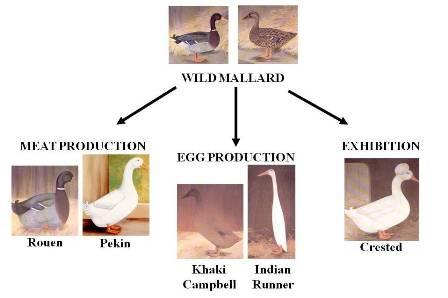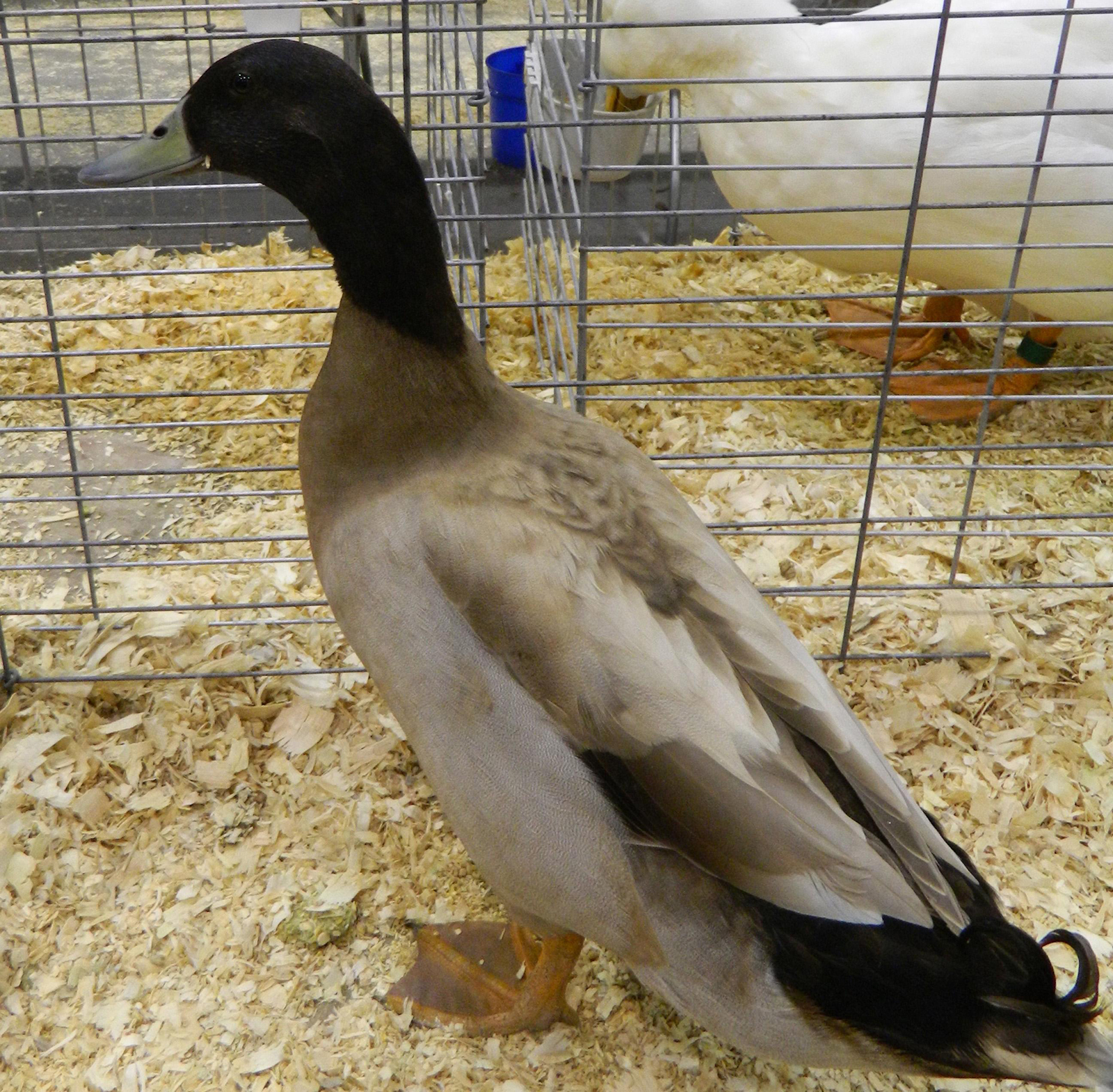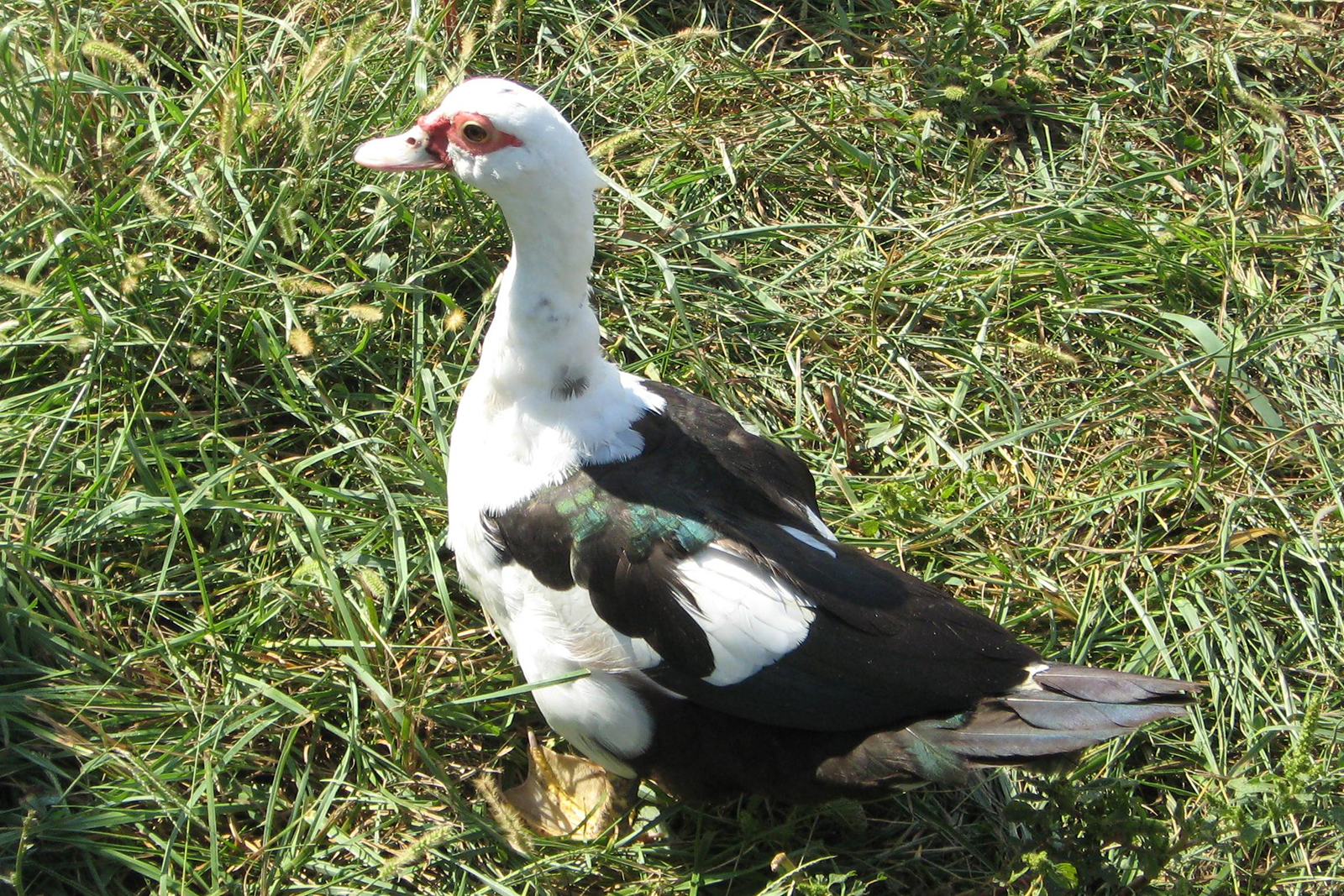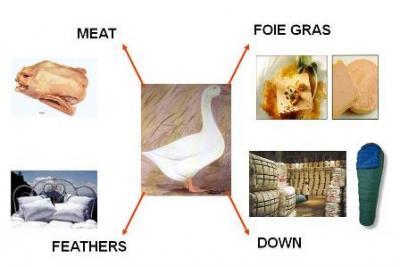Poultry Types: Waterfowl
Poultry Types: Waterfowl
Goose
Geese are raised commercially for meat, feathers, down and foie gras (a delicacy made from the fatty livers of ducks or geese). Some geese are also kept as guard animals since they readily detect sounds that are not normal to the area in which they are kept. Geese have been known to chase away wild cats such as a lynx.
Vocabulary
- Goose is singular, Geese is plural
- Goose = adult female goose
- Gander = adult male goose (Do you remember the old saying 'What is good for the goose is good for the gander"?)
- Gosling - young (baby) goose
- Down = layer of fine feathers found under the tougher exterior feathers. Very young birds are clad only in down.
- Foie gras = French for 'fat liver' and is a food product made form the liver of a duck or goose that has been specifically fattened.
Breed Selection
Geese differ from ducks in that they have longer necks. In addition, geese shanks have hexagonal scales rather than the clam-shaped scales found in ducks. Geese were used as guards by the Romans because geese are able to tell the regular, everyday sounds and sights from those that are unfamiliar.
Geese have been raised in Europe for centuries. When the first settlers came to the 'New world' geese were brought over with them. Geese were kept for both food and feathers. Very little research has been done to improve the genetics of geese since most of the attention has been focused on chickens and turkeys.
ASC-196: Selecting the Right Goose Breed
Origins and breeds of domestic geese (FAO)
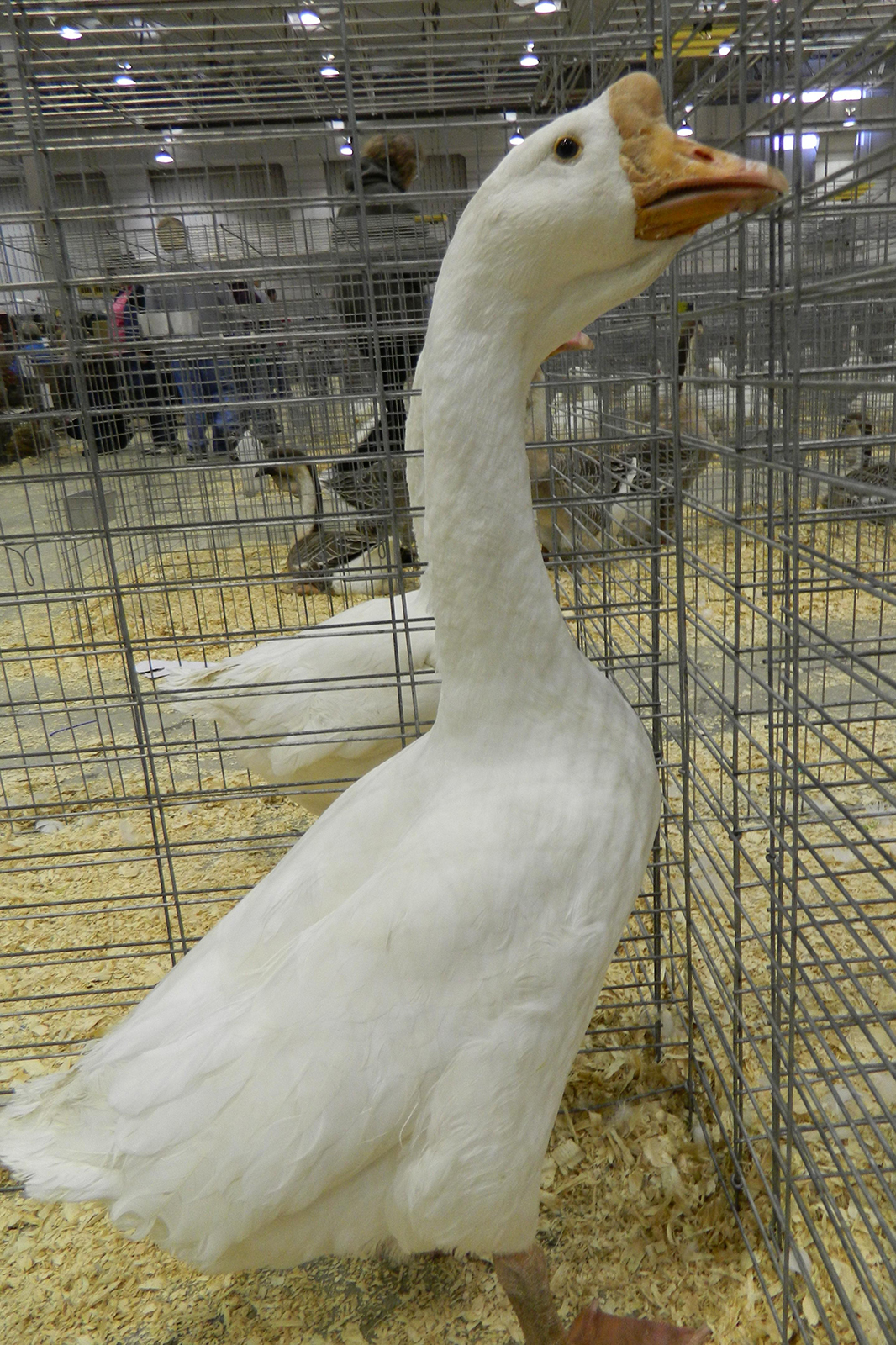
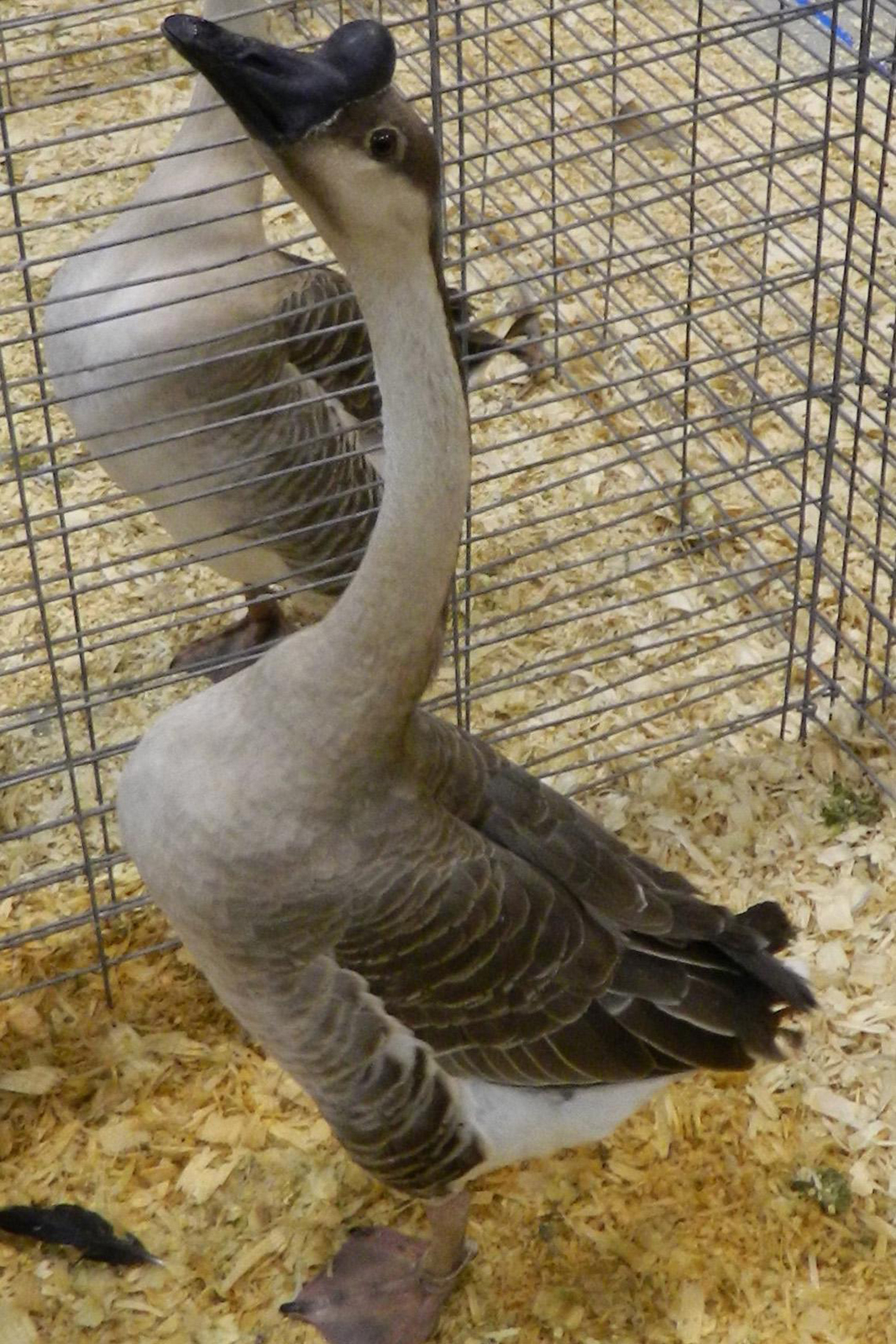
Duck
All the different breeds of ducks (except for Muscovy's) are descendant from the wild mallard. This is based on the presence of the sex-feather in the tail of the male mallard as well as the males of the domesticated duck breeds. The mallard is the only wild duck that has this type of tail feather.
Although we call the muscovy a duck it is technically not a duck. The muscovy is a South American waterfowl that has a body like a duck, behavaes like a goose in that it hisses rather than quacks, has a breast like a turkey, and roosters like a chicken. The incubation period for a muscovy is 35 days, instead of the typical 28 days for ducks. Although muscovies will breed with domestic ducks, the resulting offspring are infertile and are called 'mule' ducks. The term 'moulard' duck is sometimes used for the offspring of a muscovy male and a pekin female. Again the offspring are infertile. The term 'magret' refers to the breast from the moulard duck and it is sometimes aged out to 7 days to augment flavor.
As with chickens, there are meat, egg and exhibition breeds of ducks. Some of the egg-laying breeds can lay more eggs per year than many chicken breeds. Some of hte meat breeds of ducks are also used to produce foie gras, which is a delicacy made from the fatty liver of ducks or geese.
Vocabulary
- Duck is singular, Ducks is plural
- Duck/Hen = adult female duck
- Drake = adult male duck
- Duckling = young (baby) duck
- Foie gras = French for 'fat liver' and is a food product made form the liver of a duck or goose that has been specifically fattened.
Breed Selection
Ducks can be raised for both meat and egg production. Selective breeding has developed breeds of ducks (e.g., Campbell and Runner) that are excellent egg producers. Other breeds are most suited for meat production. Some duck breeds are kept simply as ornamentals for poultry shows or ponds.
All the ducks breeds raised today (except the Muscovy, which is not really a duck) are descendants of the wild Mallard. The Mallard is the only wild breed of duck that has curled sex-feathers on the tail. The sex figures are two hard, curled feathers growing from the upper portion of the tail in drakes (male ducks). These feathers grow upward and forward.
The Muscovy duck is the only 'duck' that is not descended from the Mallard. The Muscovy is actually a distinct species. Muscovies are from the southern hemisphere (Mallards are from the northern hemisphere), specifically in the mountainous jungles of Peru, Brazil, Bolivia, and Ecuador near the headwaters of the Amazon river. The Muscovy has a body like a duck; it nests, attacks predators and hisses like a goose; it roosts like a chicken; and has a plump breast like a turkey.
